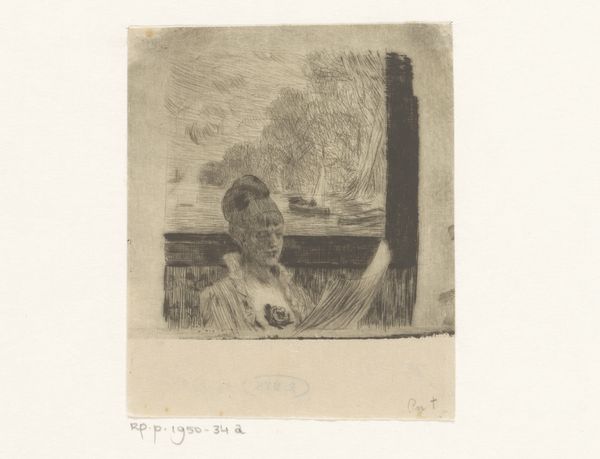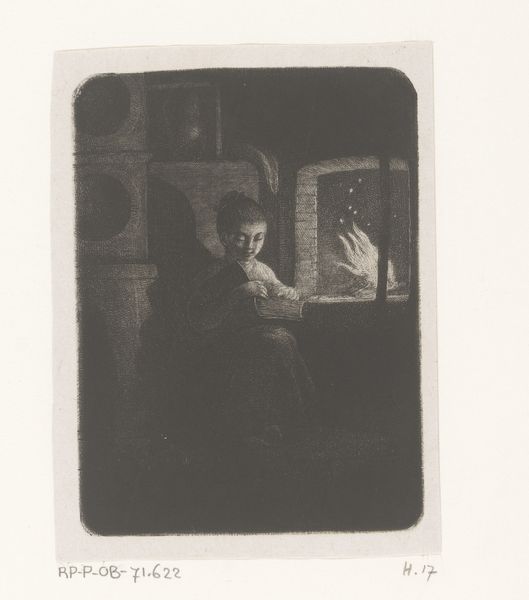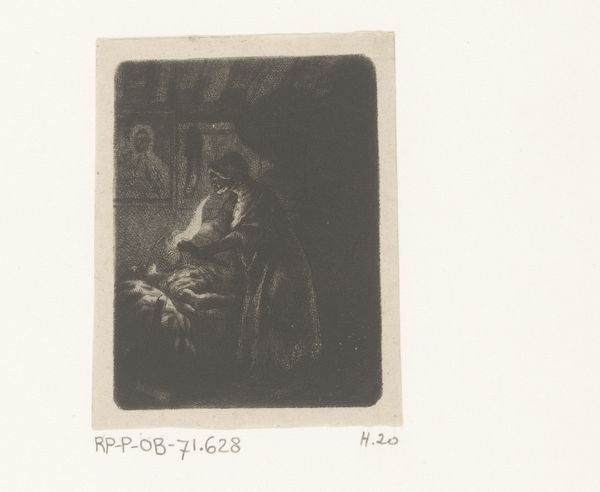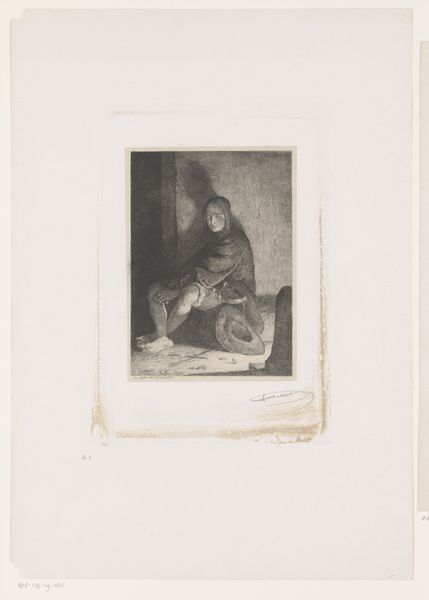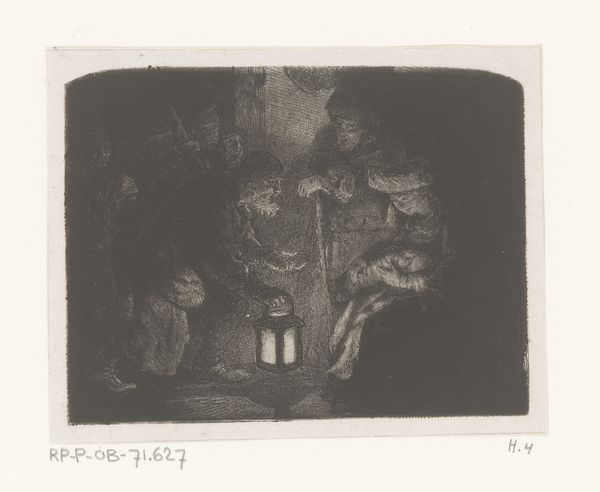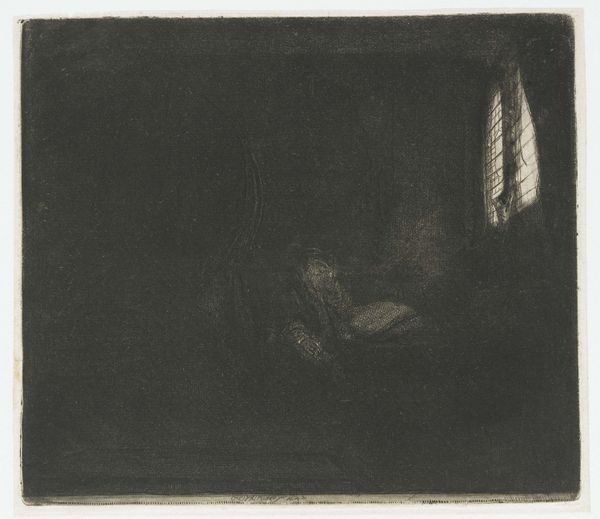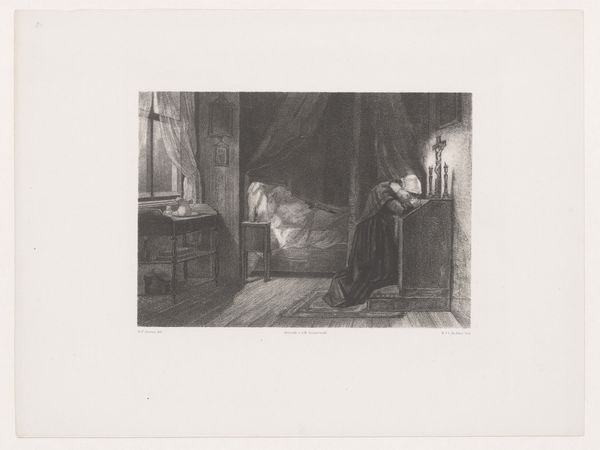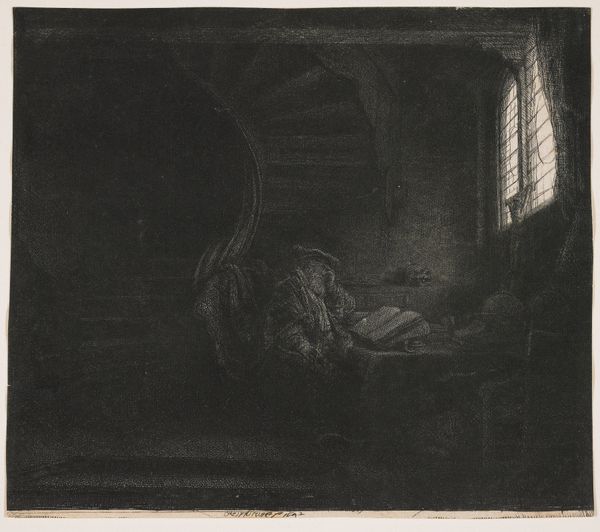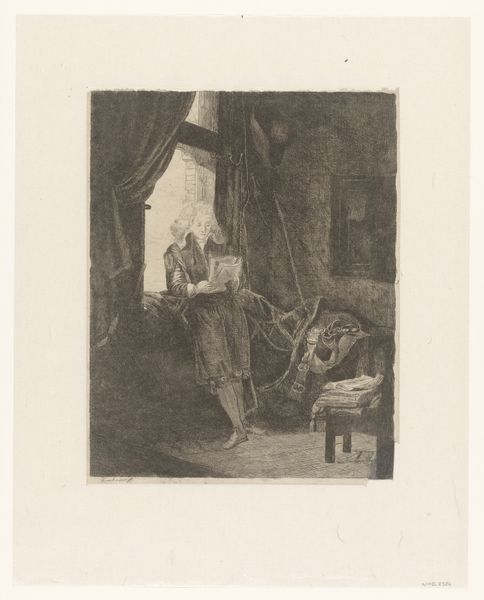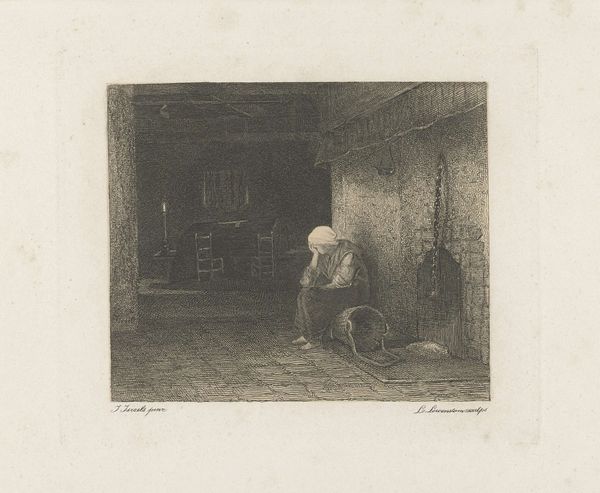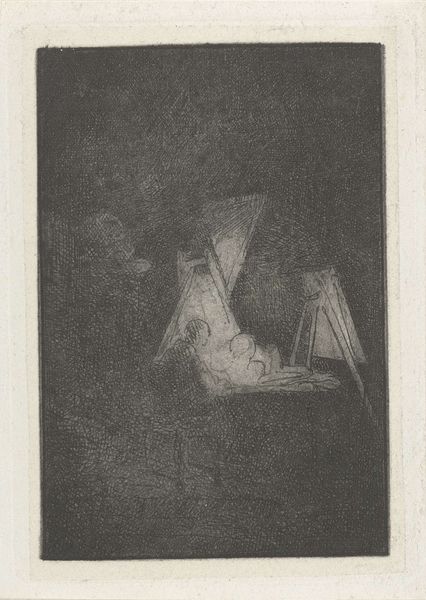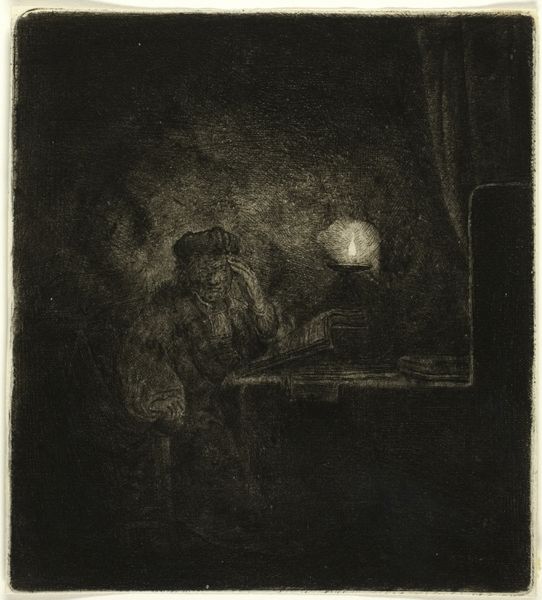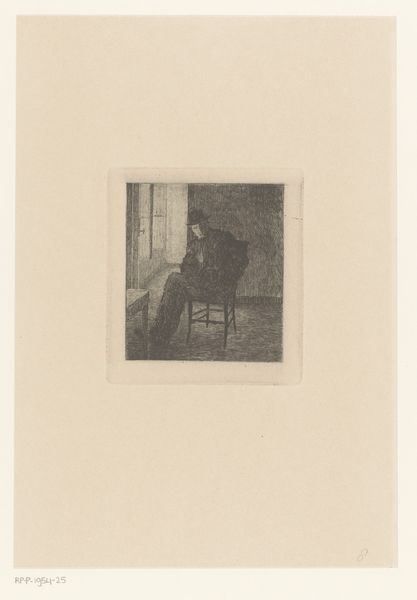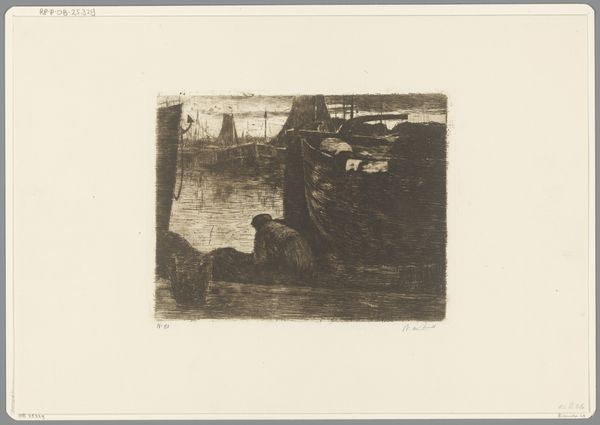
drawing, print, etching
#
portrait
#
drawing
# print
#
etching
#
old engraving style
#
romanticism
#
genre-painting
#
monochrome
Dimensions: height 73 mm, width 84 mm
Copyright: Rijks Museum: Open Domain
Curator: There's something immediately compelling about this image. The shadowy interior… it’s almost claustrophobic. Editor: Indeed. This is an etching by Jean-Pierre Norblin de la Gourdaine, called "Tekenaar in donker interieur," or "Artist in a Dark Interior," likely created between 1755 and 1830. Curator: Dark is certainly the word. I’m struck by the contrast – that small, luminous rectangle where the artist is working… it's like a little window of creation. What does it tell us, seeing an artist represented in this way? Editor: The monochrome aesthetic lends an almost dreamlike quality to the depiction. If we look closely at the artist's workspace, we might gather insights into the artistic conventions of the era. The image he is replicating is also a very interesting composition. Curator: Absolutely. Etchings at the time became such potent tools for circulating ideas. Was this piece intended for a wide audience, perhaps showcasing the Romantic era’s fascination with the artist's solitary genius? Editor: Most certainly. These genre paintings captured an essence of an artist's isolated creative mind which was particularly appealing and influential during that historical moment. But if we analyze the social and institutional factors in place, the romantic artist also captures a collective mood for innovation. Curator: You raise an interesting point! I am thinking of that bust with the helmet positioned above the artist. That's quite suggestive. Does the iconography signal something about the artist's ambitions, maybe likening them to some form of military hero of artistic thought? Editor: Exactly. Symbols such as these help embed classical notions into modern life and signal an eternal cultural conversation across eras. Curator: I am amazed how that light reveals not just the image on the canvas, but this deeper cultural link. Editor: Well, it speaks to how art becomes more than just representation, doesn’t it? Curator: It truly does, embedding visual continuity between history, identity, and, perhaps, a reflection on how artistic movements gain momentum. Thank you.
Comments
No comments
Be the first to comment and join the conversation on the ultimate creative platform.
